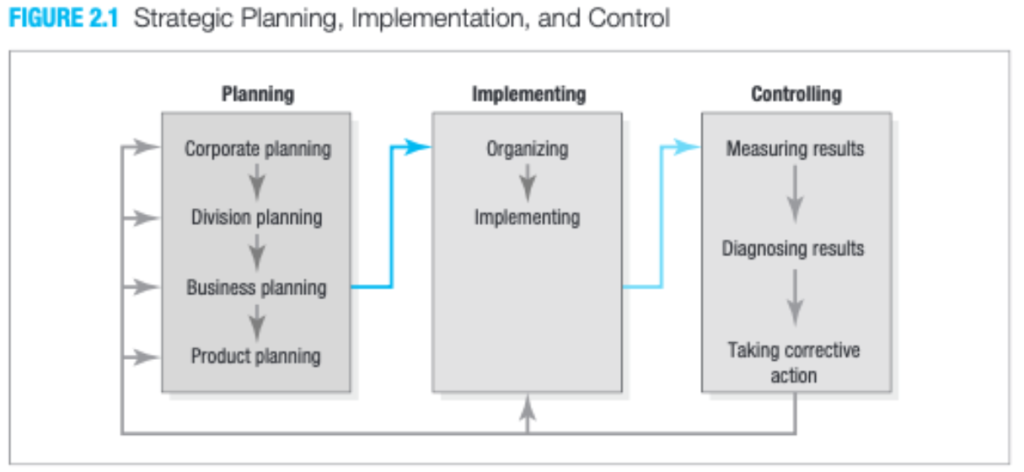The Central Role of Strategic Planning
Marketers must prioritize strategic planning in three key areas:
- managing their businesses as an investment portfolio,
- assessing the market’s growth rate and the company’s position in that market, and
- establishing a strategy.
Most large companies consist of four organizational levels: corporate, division, business unit, and product.
Corporate headquarters designs a corporate strategic plan to guide the whole enterprise; it makes decisions on the amount of resources to allocate to each division as well as on which businesses to start or eliminate.
Each division establishes a plan covering the allocation of funds to each business unit within the division.
Each business unit develops a strategic plan to carry that business unit into a profit-able future.
Finally, each product level (product line, brand) develops a marketing plan for achieving its objectives.The marketing plan is the central instrument for directing and coordinating the marketing effort, operating at both the strategic and tactical levels.
The strategic marketing plan lays out the target markets and the firm’s value proposition, based on an analysis of the best market opportunities.
The tactical marketing plan specifies the marketing tactics, including product features, promotion, merchandising, pricing, sales channels, and service.
The complete strategic planning, implementation, and control cycle is shown in Figure 2.1.

